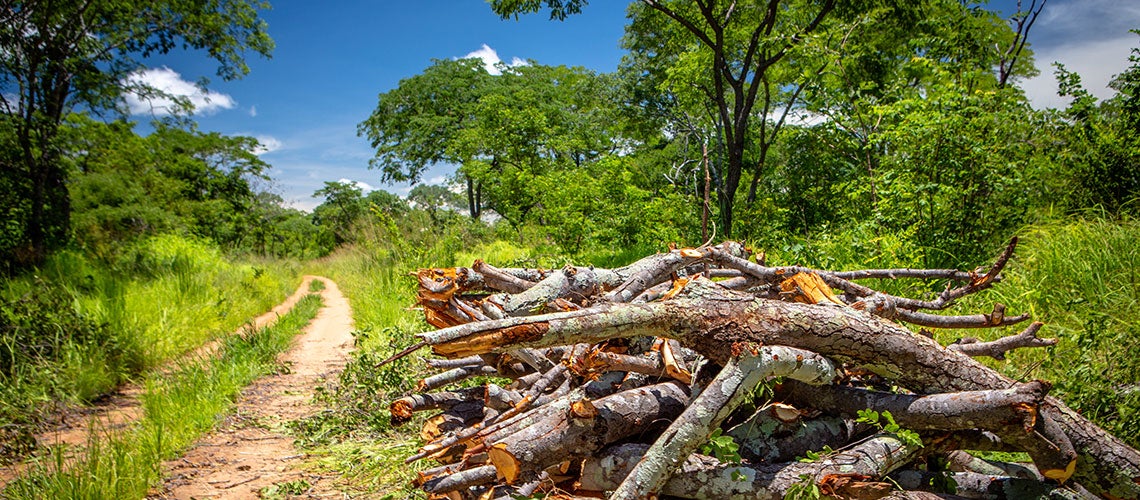 Promoting sustainable agriculture and forest conservation through carbon finance in Zambia – Lessons from the COMACO Landscape Management Project
Promoting sustainable agriculture and forest conservation through carbon finance in Zambia – Lessons from the COMACO Landscape Management Project
When the Ngoni people gather in Chipata, the Eastern province of Zambia, to celebrate their annual traditional ceremony, they tell stories of the past; when thick forests covered the hills, ridges and plateaus of the province. They also talk about plentiful rains the province enjoyed every growing season. Nowadays, they also lament about droughts and the bare hills and deforested plateau that greet their annual ceremony.
Climate change, coupled with unsustainable practices of land clearing for agriculture and charcoal burning, have taken a toll on the once thick forests. Tons of fertile topsoil have been washed away, lowering farm productivity. There is an increase in frequency of destructive floods, as well as decline in biodiversity that is crucial to the proper functioning of ecosystems. The community’s hope lies in bringing back trees to protect the environment, minimize the impacts of climate change, secure agricultural yields and improve their livelihoods.
To meet some of these challenges, the World Bank initiated the COMACO Landscape Management Project to halt the destruction of forests and promote the adoption of climate-smart agricultural practices and sustainable forest management in landscapes of the Eastern Province. The project is a story of successful partnership in landscape management involving the government, the World Bank, and the private sector through COMACO, a social enterprise that supports wildlife conversation and small-scale farmers in Eastern Zambia. Sustainable landscape management is based on simple technologies and practices which enhances forest conservation and increases smallholders’ crop yields and income. Given the fact that the livelihood of communities in the area is heavily dependent on forest resources, the challenge is how to shift their mindset towards sustainable management of the same resources. Turning the idea of Sustainable Agricultural Land Management (SALM) and of Reduced Deforestation and Forest Degradation (REDD+) from concept to reality is not something that can be achieved within a short period of time. It is a process that requires coordinated effort among all stakeholders, in addition to putting the right incentives in place.
Proven practices with huge climate and food security benefits under the project include: i) Agroforestry: planting crops in alleys of Gliricidia, a fertilizer tree that fixes nitrogen in soils; ii) Mulching and crop residue retention (no burning of biomass); iii) Crop rotation and diversification with legumes; and iv) Composting. The project is evidence that climate mitigation and socioeconomic development can be simultaneously achieved through active participation of local communities. More than 19,000 farmers were registered by the project, covering over 17,100 hectares of agricultural land. In addition, REDD+ activities were implemented on more than 111,200 hectares of community forests. The project beneficiaries stretch across nine chiefdoms in the province.
Carbon payment is a positive financial reward for efforts made by communities in reducing greenhouse gas emissions. A total of $885,200 has been paid to COMACO, chiefdoms and farmer cooperatives for emissions reductions generated by the project. It is hoped that this “payment for results” will motivate collective performance at the chiefdom level and eventually at the provincial level, leading to increased environmental and social benefits. The scale of GHG emission reductions achieved by the project is about 264,578 tons of carbon dioxide equivalent, corresponding to taking 57,160 passenger vehicles off the road for one year, or avoiding the burning of over 292 million pounds of coal.
The COMACO project has led to the launch of a successor project – the Zambia Integrated Forest Landscape Project (ZIFLP) in the Eastern Province. The ZIFLP is aiming for similar carbon payments but on a much larger scale of emission reductions – about 6 million tons of carbon dioxide equivalent, in addition to improving the livelihoods of more than 200,000 beneficiaries.





Join the Conversation